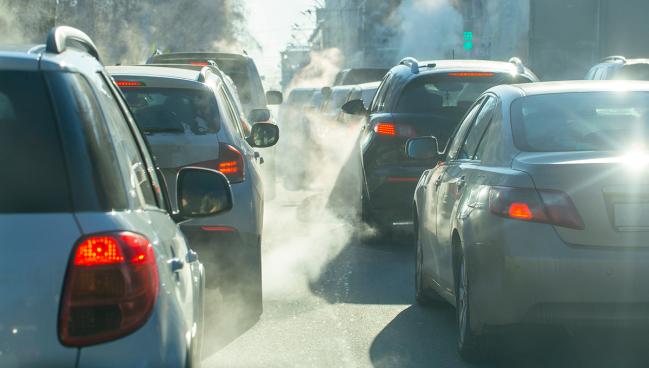New Data Support Tighter Air Pollution Standards to Reduce CV Events
The study of 3.7 million Americans finds evidence of acute MI and CVD mortality even at supposedly “safe” levels.

Although long-term exposure to air pollution is a known risk factor for CVD and regulatory standards are in place to protect the public, new data from a study of 3.7 million Americans suggests fine particulate exposure that falls within, or even below, levels currently thought to be safe may not be low enough to prevent CV events and death.
As reported by TCTMD, the intersection of the climate crisis and CV health has become a topic of global urgency. In the United States, the Environmental Protection Agency (EPA), which is in charge of setting the National Ambient Air Quality Standards, revisits the safety threshold every few years based on updated data on fine particle matter (PM2.5). Most recently, the agency decided in 2020 not to change the threshold from 12 μg/m3over 1 year of exposure, a standard that has been in place since 2012 but had been as high as 15.0 μg/m3in the late 1990s. Last month, the EPA announced it was considering lowering it further to between 9 and 10 μg/m3and is currently inviting public comment to consider a range anywhere between 8 and 11 μg/m3.
“[The EPA has said] in their report that there is definitely strong evidence to lower it at least to 10, and our study certainly supports that,” lead author Stacey E. Alexeeff, PhD (Kaiser Permanente Division of Research, Oakland, CA), told TCTMD. “Whether it should be lowered below 10 should be based on all of the evidence across all of the studies, but I can say that our study certainly does find increased risk of heart attack even at levels of 8 to 9.9 compared to less than 8, which definitely suggests that lowering it to 8 could be necessary to reduce the risk of heart attacks.”
Compared with exposures of < 8 μg/m3, there was a 6% increased risk of incident acute MI and a 7% increased risk of CVD mortality at yearly PM2.5 exposures between 10.0 and 11.9 μg/m3.
Additionally, in line with other studies that have drawn connections between where individuals live and their risk of CVD with higher PM2.5 exposure, Alexeeff and colleagues found the strongest association in those living in low socioeconomic status neighborhoods. While the reasons behind that finding are unclear, Alexeeff said a multitude of factors may be involved, from poorer underlying health and comorbidities, to stress incurred by neighborhood conditions, or even the physical buildings themselves.
“Studies that have shown that older buildings and buildings and in poorer neighborhoods aren't as airtight as newer buildings and [may be] letting more air in, so the air pollution exposures from the outside penetrate inside,” she added.
Increased Risk Even at Low Exposure Levels
For the study, published February 24, 2023, in JAMA Network Open, Alexeeff and colleagues geocoded the addresses of 3.7 million Kaiser Permanente Northern California health plan members (mean age 41 years; 52.5% female, 7.6% Black) and linked the locations to annual PM2.5 exposure data. That information was cross referenced with patients diagnosed with acute MI or those who had died from ischemic heart disease or CVD, accounting for competing risks and comorbidities.
Even at PM2.5 exposures of 8.0 to 9.9 μg/m3, there was excess acute MI compared with < 8 μg/m3. For every 10 μg/m3increase in 1-year mean PM2.5, there was a 12% increased risk of incident acute MI, a 21% increased risk of ischemic heart disease mortality, and an 8% increased risk of CVD mortality.
Overall, risks were not higher in Black or Hispanic participants compared with white participants, nor were there differences by smoking status. Older individuals had higher risk for CVD mortality, but not for ischemic heart disease mortality or incident acute MI. Ischemic heart disease death was more common in women than men, but there was no difference in CVD mortality or incident acute MI.
In secondary analyses looking at acute MI subtypes, there was an increased risk of NSTEMI per 10 μg/m3increase in 1-year mean PM2.5 (HR 1.16; 95% CI 1.09-1.23).
The authors acknowledge that they did not have data on individual-level time outdoors, physical activity, diet, alcohol use, marital status, or detailed smoking history.
“We know that air pollution is harmful for cardiovascular health and we've known that for a long time, but in order to protect everyone, we need to keep doing these large detailed studies to figure out exactly who is the most vulnerable and what level is sufficient to protect the public,” Alexeeff told TCTMD. “These are exposures that are happening where people live . . . that over the long term are adding to their risk. They can’t just move and get away from it.”
Alexeeff and colleagues say they hope this time around, the EPA moves to lower the standard after choosing not to do so under the prior presidential administration. After the refusal to budge in 2020, an independent group of scientists, known as the Clean Air Scientific Advisory Committee, blasted the decision in a “sounding board” article published in the New England Journal of Medicine.
L.A. McKeown is a Senior Medical Journalist for TCTMD, the Section Editor of CV Team Forum, and Senior Medical…
Read Full BioSources
Alexeeff SE, Deosaransingh K, MPH; Van Den Eeden S, et al. Association of long-term exposure to particulate air pollution with cardiovascular events in California. JAMA Network Open. 2023;6(2):e230561.
Disclosures
- Alexeeff report no relevant conflicts of interest.





Comments